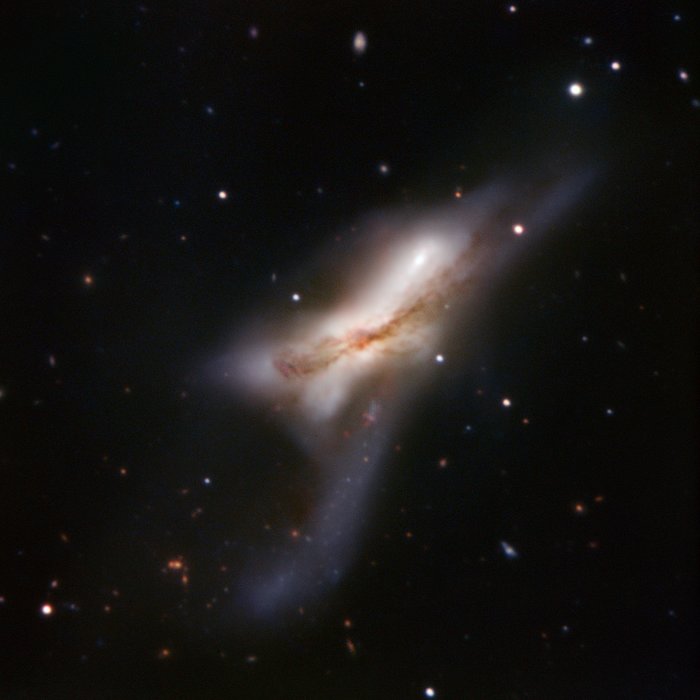Crash of the titans
NGC 520 — also known as Arp 157 — looks like a galaxy in the midst of exploding. In reality, it’s the exact opposite. Two enormous spiral galaxies are crashing into each other, melding and forming a new conglomerate. This happens slowly, over millions of years — the whole process started some 300 million years ago. The object, about 100 000 light-years across, is now in the middle stage of the merging process, as the two nuclei haven’t merged yet, but the two discs have. The merger features a tail of stars and a prominent dust lane. NGC 520 is one of the brightest interacting galaxies in the sky and lies in the direction of Pisces (the Fish), approximately 100 million light-years from Earth.
This image was taken by the ESO Faint Object Spectrograph and Camera attached to the 3.6-metre telescope at La Silla in Chile. It is based on data obtained through B, V, R and H-alpha filters.
Källa:ESO
Om bilden
| ID: | potw1048a |
| Typ: | Observation |
| Publiceringsdatum: | 29 november 2010 10:00 |
| Storlek: | 959 x 959 px |
Om objektet
| Namn: | Arp 157, NGC 520 |
| Typ: | Local Universe : Galaxy : Type : Interacting |
| Avstånd: | 100 miljon ljusår |
| Constellation: | Pisces |
| Kategori: | Galaxies |
Skrivbordsunderlägg
Koordinater
| Position (RA): | 1 24 34.75 |
| Position (Dec): | 3° 47' 30.00" |
| Field of view: | 5.04 x 5.04 arcminutes |
| Orientering: | Nord är 0.9° höger om lodrätt |
Färger och filter
| Band | Våglängd | Teleskop |
|---|---|---|
| Synligt ljus B | 445 nm | ESO 3.6-metre telescope EFOSC2 |
| Synligt ljus V | 551 nm | ESO 3.6-metre telescope EFOSC2 |
| Synligt ljus H-alpha | 1.63 μm | ESO 3.6-metre telescope EFOSC2 |
| Synligt ljus R | 658 nm | ESO 3.6-metre telescope EFOSC2 |

